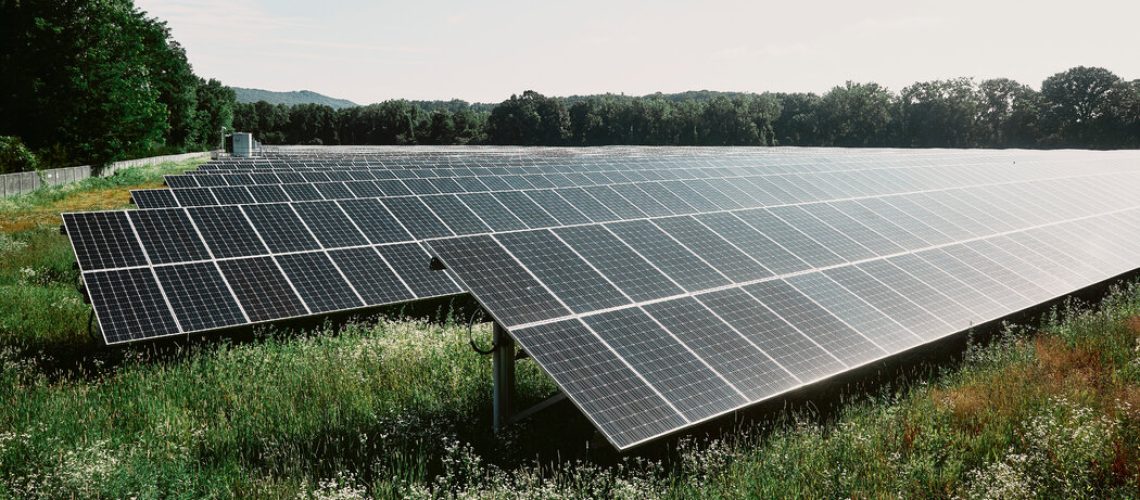Nearly every day, there is confounding news to make us question whether the world is pushing hard enough to transition away from fossil fuels.
Yesterday, Chevron announced a $53 billion acquisition of a midsize rival, as Big Oil consolidates and doubles down on the bet that fossil fuel demand will continue to increase.
But if you zoom out just a bit, the picture may be a bit clearer. This morning, the International Energy Agency predicted that global demand for oil, natural gas and coal will peak in about seven years, as my colleague Brad Plumer reported. Solar, wind, hydropower, electric vehicles and heat pumps are all projected to surge.
A separate study that came out last week suggests the world may have reached “a global irreversible solar tipping point,” with ever-cheaper solar dominating electricity markets purely because of market forces, without any additional climate policies.
For the past few months, we’ve been telling you all about the U.S. energy transition that’s arriving faster than you think. But the move toward solar is global: the study’s authors expect solar to be the cheapest source of electricity in almost all countries by 2027.
If the I.E.A.’s projections come to pass, oil and gas demand would most likely plateau at slightly above today’s levels for the next three decades, expanding in developing countries and shrinking in advanced economies. Demand for coal, the dirtiest of fossil fuels, would start declining, though it might fluctuate year to year if, say, coal plants needed to run more often during heat waves or droughts.
“The transition to clean energy is happening worldwide and it’s unstoppable,” Fatih Birol, executive director of the International Energy Agency, told Brad.
The cleanest fuel is the cheapest
Cost is the bedrock of the solar revolution. Between 2010 and 2020, the study found, the cost of solar cells fell by 15 percent each year. Those are staggering numbers.
“The pace of decline in price initially surprised many people,” my colleague Ivan Penn, who covers the energy sector, told me.
Starting in the 2000s, China pumped billions of dollars into solar technology as it tried to reduce its dependence on foreign energy. The boom in production, and the ruthless competition and scientific innovation that followed, caused the price of panels to plummet, even as many companies were driven out of business.
It was also around that time that California started to heavily subsidize rooftop solar. About a quarter of the state’s electricity now comes from solar.
According to a recent report by Lazard, a financial advisory and management firm, unsubsidized solar photovoltaic and onshore wind power are now about 48 percent cheaper than the next cheapest energy source, natural gas.
“Add federal tax incentives designed to hasten development of more clean energy resources and the cost of solar and wind drop to zero,” Ivan said, citing the report.
What about Big Oil?
The companies and countries that are dependent on fossil fuel profits will not stand idly by and let their fossil fuel operations fade away.
“We live in the real world, and have to allocate capital to meet real world demands,” Mike Wirth, the chief executive of Chevron, told the Financial Times. He predicted demand for oil would “continue to grow to 2030 and beyond.”
The oil cartel OPEC has warned that the forecast from the I.E.A. could lead countries and companies to underinvest in oil and gas drilling. The resulting lack of supply could lead to “energy chaos,” the cartel said. It projects that global demand for oil and natural gas will keep rising until 2045.
Companies are adapting to new realities, most noticeably with a wave of consolidation with the Chevron-Hess deal, and the even bigger Exxon acquisition of Pioneer Energy this month. As DealBook reports, investors haven’t been pleased with European oil giants like BP and Shell that have, until recently, emphasized their efforts to reduce carbon emissions.
The path ahead
The world is at a crossroads, said Femke Nijsse, a lecturer at the University of Exeter and one of the authors of the solar tipping point study.
Pulling in one direction are the countries and governments that want to increase fossil fuel production, which are reaping the vast profits that oil and gas still generate. Pulling the other way are the leaders, entrepreneurs, policymakers and activists who are urgently trying to move the world toward clean energy, empowered by the stunning drop in cost for solar and other clean energy technologies.
The fossil fuel camp is betting that acquisitions like the Chevron-Hess deal and investments in new production will pay off in the long term. But the example of solar shows that market forces can be uniquely powerful in their own right.
“There is a lot of policy that still needs to be written,” Nijsse said. But “we can repeat the success of solar in different sectors.”
Poland Spring’s hidden attack on a Maine water law
When Maine lawmakers tried to tighten regulations on large-scale access to water, the company behind Poland Spring and other big bottled water brands set out to rewrite the rules.
Bottlers have faced increasing scrutiny for the millions of throwaway plastic bottles they produce, the marketing message that their products are safer or healthier than tap water, and for a business model in which they buy freshwater, often at low cost, only to sell it back to the public at much higher prices.
A company called BlueTriton owns many of the nation’s biggest brands, including Poland Spring, which is named after a natural spring in Maine that ran dry decades ago.
Proposed legislation in Maine threatened BlueTriton’s access to the groundwater it bottles and sells. Then a lobbyist for BlueTriton proposed an amendment that would gut the entire bill.
To find out what happened next, read the rest of the article here. —Hiroko Tabuchi




